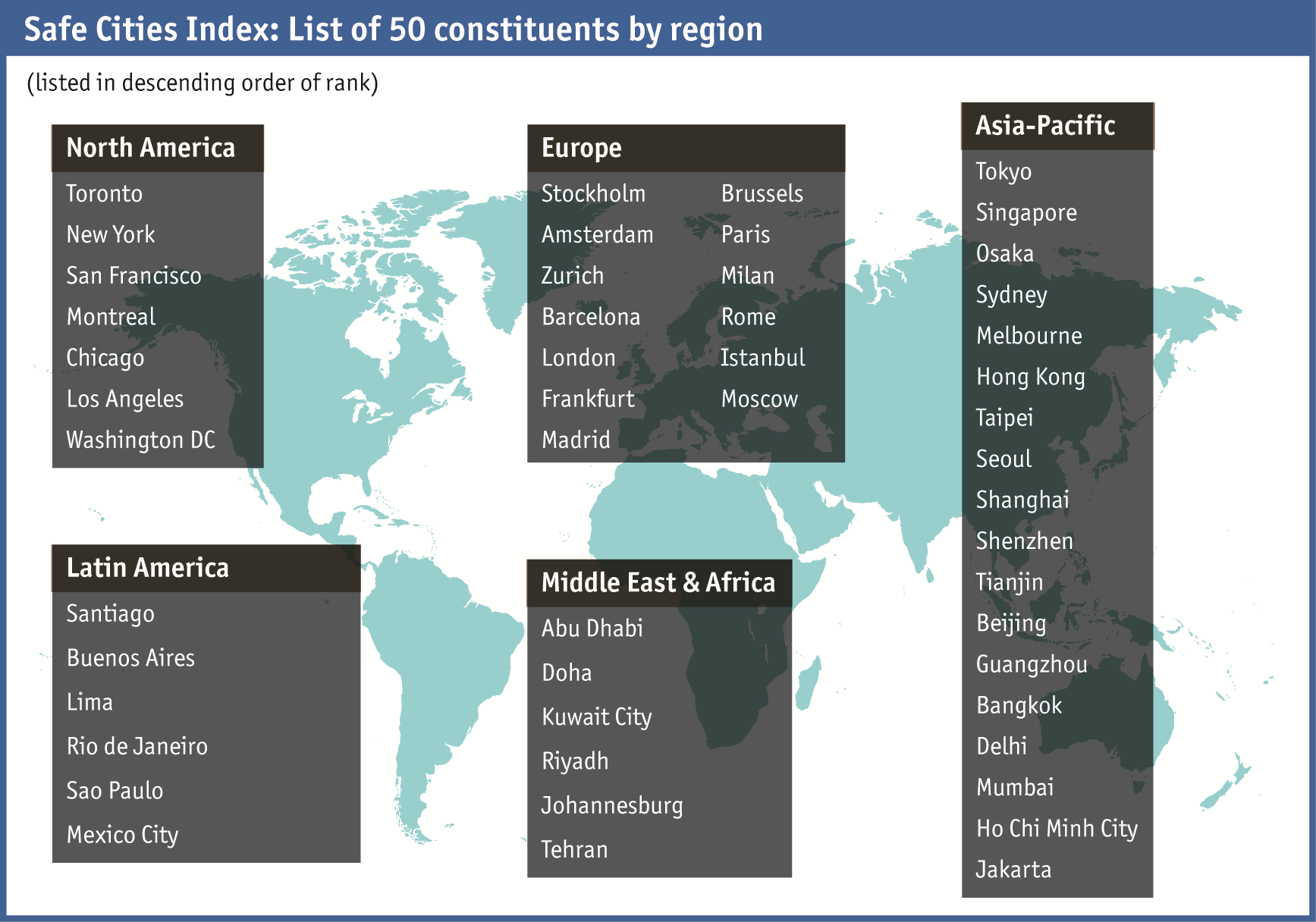Executive summary
Cities are already home to a majority of people on the planet. The current level of urbanisation ranges from 82% of the population in North America to 40% in Africa. But all regions are expected to follow this trend towards greater urbanisation over the next three decades. Lagos, the most populous city Nigeria, is predicted to double in size in the next 15 years.
However, cities should not take continued population growth for granted. As the UN’s latest World Urbanisation Prospects study points out, some cities have experienced population decline because of, among other things, low fertility rates, economic contraction and natural disasters. The population of Seoul, the capital of South Korea, has shrunk by 800,000 since 1990.
Likewise, the safety of cities can ebb and flow. New York recorded a record high of 2,245 homicides in 1990, equating to six murders per day. Since then the population has grown by over 1m people, while homicide rates have fallen. The murder rate in 2013 stood at 335, a historic low, moving New York below Chicago—a city with under one-third of New York’s population.
As some threats recede, others mature. The frequency of terrorism and natural disasters has changed the nature of urban safety: power, communications and transport systems must be robust and able to withstand new external shocks. Meanwhile, new risks emerge. Cyber risk has accompanied the advent of the digital age.
Urban safety is therefore a critical issue that is set to become even more important over time. Securing public safety means addressing a wide—and evolving—range of risks. The Safe Cities Index aims to capture this complexity. The Index tracks the relative safety of a city across four categories: digital security, health security, infrastructure safety and personal safety. The Index’s key findings include the following.
- Tokyo tops the overall ranking. The world’s most populous city is also the safest in the Index. The Japanese capital performs most strongly in the digital security category, three points ahead of Singapore in second place. Meanwhile, Jakarta is at the bottom of the list of 50 cities in the Index. The Indonesian capital only rises out of the bottom five places in the health security category (44).
- Safety is closely linked to wealth and economic development. Unsurprisingly, a division emerges in the Index between cities in developed markets, which tend to fall into the top half of the overall list, and cities in developing markets, which appear in the bottom half. Significant gaps in safety exist along these lines within regions. Rich Asian cities (Tokyo, Singapore and Osaka) occupy the top three positions in the Index, while poorer neighbours (Ho Chi Minh City and Jakarta) fill two of the bottom three positions.
- However, wealth and ample resources are no guarantee of urban safety. Four of the five Middle Eastern cities in the Index are considered high-income, but only one makes it into the top half of the Index: at 25 Abu Dhabi is 21 places above Riyadh at number 46. Similar divides between cities of comparable economic status exist elsewhere. Seoul is 23 positions below Tokyo in the overall ranking (and 46 places separate the two on digital security).
- US cities perform most strongly in the digital security category, while Europe struggles. New York is the only US city to make it into the top ten of the overall index (at 10). However, it is third for digital security, with three of the four other US cities in the Index (Los Angeles, San Francisco and Chicago) joining it in the top ten. Meanwhile, European cities perform relatively poorly. London, at 16, is the highest-ranking European entry in the digital security index; Rome is the lowest, at 35.
- Leaders in digital security must not overlook real-world risks. Los Angeles falls from 6th place in digital security to 23rd for personal safety. San Francisco suffers a similar drop, falling from 8th to 21st. For these cities—both home to high-tech industries—a focus on technology and cyber security does not seem to be matched by success in combating physical crime. Urban safety initiatives need to straddle the digital and physical realms as the divide between them blurs.
- Technology is now on the frontline of urban safety, alongside people. Data are being used to tackle crime, monitor infrastructure and limit the spread of disease. As some cities pursue smarter methods of preventing—rather than simply reacting to—these diverse security threats, a lack of data in emerging markets could exacerbate the urban safety divide between rich and poor. Nonetheless, investment in traditional safety methods, such as bolstering police visibility, continues to deliver positive results from Spain to South Africa.
- Collaboration on safety is critical in a complex urban environment. Now that a growing number of essential systems are interconnected, city experts stress the need to bring together representatives from government, business and the community before threats to safety and security strike. Some cities have appointed an official to co-ordinate this citywide resilience. With the evolution of online threats transcending geographical boundaries, such co-ordination will increasingly be called for between cities.
- Being statistically safe is not the same as feeling safe. Out of the 50 cities, only Zurich and Mexico City get the same rank in the overall index as they do in the indicator that measures the perception of safety among their citizens. Urban citizens in the US, for instance, tend to feel less safe than they should, based on their city’s position in the Index. The challenge for city leaders is to translate progress on safety into changing public perceptions. But cities also aspire to be attractive places to live in. So smart solutions, such as intelligent lighting, should be pursued over ubiquitous cameras or gated communities.









